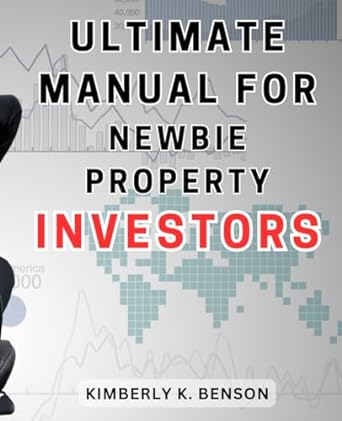Question
This question's purpose is to form a portfolio with 2 risky assets (2 common stocks) and 1 risk-free asset (1-year Treasury Bills), and calculate the
This question's purpose is to form a portfolio with 2 risky assets (2 common stocks) and 1 risk-free asset (1-year Treasury Bills), and calculate the optimal portfolio weights among these assets.
Pick 2 stocks you are interested in investing (They can be any stock, as long as they are common stocks listed on NYSE/Nasdaq/Amex). For each of the stock, do the following:
Please use Facebook and Apple.
(1) Obtain its 5-year historical daily prices (1/1/2015 12/31-2019) on Yahoo finance and calculate its daily holding period returns.
(2) Generate a summary statistics report on its holding period returns.
(3) Create a Histogram chart on its holding period returns.
(4) Estimate its annualized volatility using all the holding period returns from (1).
(5) Use the S&P 500 holding period returns during the same period as market return, run a regression to estimate the beta of this stock. Y: stock return minus risk-free rate. X: market return minus risk-free rate. You can use 1.5% as risk-free rate.
(6) Once beta is estimated, calculate the expected return of this stock using CAPM. According to CAPM, Expected return = Rf + beta*(Rm-Rf). Note that Rf should be an annual return, Rm should also be an annualized return, which can be calculated using average of daily S&P 500 returns in part (5) multiplied by 252.
(7) Use the expected return and annualized volatility you estimated in part (4) and (6), simulate daily stock prices for the next 252 days, assuming stock prices follow Geometric Brownian Motion.
(8) Form a portfolio with both stocks and risk-free asset. Estimate the correlation coefficients between two stocks. Use this formula =CORREL(HPRs of stock1, HPRs of stock 2)
(9) Set a target portfolio return, use Solver to estimate the optimal weights for all assets in your portfolio. (Tip: If your solver is unable to give you a solution, consider changing your target portfolio return to a more realistic number, for example, if both your stocks have expected returns around 10% based on CAPM, setting a target portfolio return of 20% will probably not work.)
Answer in excel with steps clearly outlined.
Step by Step Solution
There are 3 Steps involved in it
Step: 1

Get Instant Access to Expert-Tailored Solutions
See step-by-step solutions with expert insights and AI powered tools for academic success
Step: 2

Step: 3

Ace Your Homework with AI
Get the answers you need in no time with our AI-driven, step-by-step assistance
Get Started


